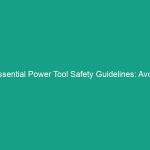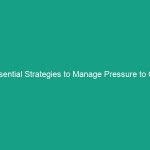Introduction
Good morning team! Today, we are going to discuss a crucial aspect of our daily operations: the safe use of powered mobile equipment. With the increasing reliance on machinery in our work Environment, understanding how to operate these machines safely is vital not only for your Safety but also for the Safety of your colleagues. The guidelines we’ll cover today will help prevent accidents and injuries, ensuring that everyone goes home safe at the end of the day.
Understanding Powered Mobile Equipment
Powered mobile equipment refers to any mobile equipment that is powered by a motor or engine, including forklifts, cherry pickers, backhoes, and other machinery used across various industries. These machines are designed to make our work easier and more efficient; however, they also pose significant risks if not used correctly. Misunderstandings about safe operating practices can lead to serious accidents, which is why it’s essential to stay informed.
Common misconceptions include the belief that all powered mobile equipment is the same and can be operated without special Training, or that safety features are merely optional. In reality, each piece of equipment has specific operating Procedures and safety features that must be understood and adhered to.
Key Hazards, Risks, and Safety Considerations
Using powered mobile equipment involves various Hazards that can lead to accidents if not properly managed. Some of these hazards include:
- Collisions: One of the most common causes of accidents is collisions with other workers, obstacles, or equipment.
- Tip-overs: Many pieces of equipment can become unstable and tip over, especially when carrying heavy loads or operating on uneven surfaces.
- Falls: Operators can fall from elevated platforms or the equipment itself if proper Safety Measures are not in place.
- Mechanical Failures: Equipment that is not properly maintained can experience mechanical failures, leading to accidents.
Ignoring these risks can lead to severe consequences, including injuries, fatalities, and legal repercussions for the company. Therefore, understanding these hazards is the first step in preventing incidents.
Best Practices, Procedures, & Actionable Advice
To ensure the safe use of powered mobile equipment, follow these Best Practices:
1. Training and Certification
Only trained and certified operators should use powered mobile equipment. Ensure that you:
- Complete the required training programs.
- Understand the specific Operation manual for the equipment you will be using.
- Regularly participate in refresher courses to stay updated on safety practices.
2. Pre-Operational Check
Before operating any powered mobile equipment, conduct a thorough pre-operational check:
- Inspect the equipment for any signs of damage or wear.
- Check fluid levels, brakes, and safety devices.
- Ensure that all safety features are functioning correctly.
3. Use Personal Protective Equipment (PPE)
Always wear appropriate PPE when operating powered mobile equipment, including:
- Hard hats
- Safety Goggles
- High-visibility vests
- Steel-toed boots
4. Safe Operating Procedures
Follow these safe operating procedures:
- Always wear your seatbelt when the equipment is equipped with one.
- Maintain a clear view of your surroundings and use spotters when necessary.
- Do not exceed the equipment’s load capacity.
- Never operate equipment while under the influence of drugs or alcohol.
5. Emergency Procedures
Know how to react in emergencies:
- Familiarize yourself with the emergency stop procedures for the equipment.
- Know the location of first aid kits and emergency exits.
- Report any accidents or near misses immediately.
6. Regular Maintenance
Ensure that equipment is regularly serviced and maintained according to the manufacturer’s recommendations. This includes:
- Scheduling routine maintenance checks.
- Keeping a maintenance log for each piece of equipment.
- Promptly addressing any repairs needed.
Regulations, Standards, and Compliance
Compliance with safety Standards is non-negotiable. Familiarize yourself with relevant OSHA Regulations and company-specific policies regarding powered mobile equipment. Adherence to these regulations not only protects you but also safeguards your coworkers and the organization as a whole. Remember, when safety is prioritized, we all benefit.
Employee Engagement & Discussion
Let’s take a moment to discuss some important points. Have you encountered any challenges while using powered mobile equipment? What safety practices do you believe are essential but often overlooked? Your insights can contribute to a safer work environment for everyone.
Conclusion & Key Takeaways
In conclusion, the safe use of powered mobile equipment is critical to ensuring a safe workplace. Remember the key points we discussed today:
- Always be trained and certified before operating any equipment.
- Conduct pre-operational checks and use PPE.
- Follow safe operating procedures and know emergency protocols.
- Regularly maintain equipment and comply with safety regulations.
Thank you for your attention and commitment to safety. Let’s continue to prioritize Safe Practices in our daily operations. Together, we can create a culture of safety that protects everyone at work!


